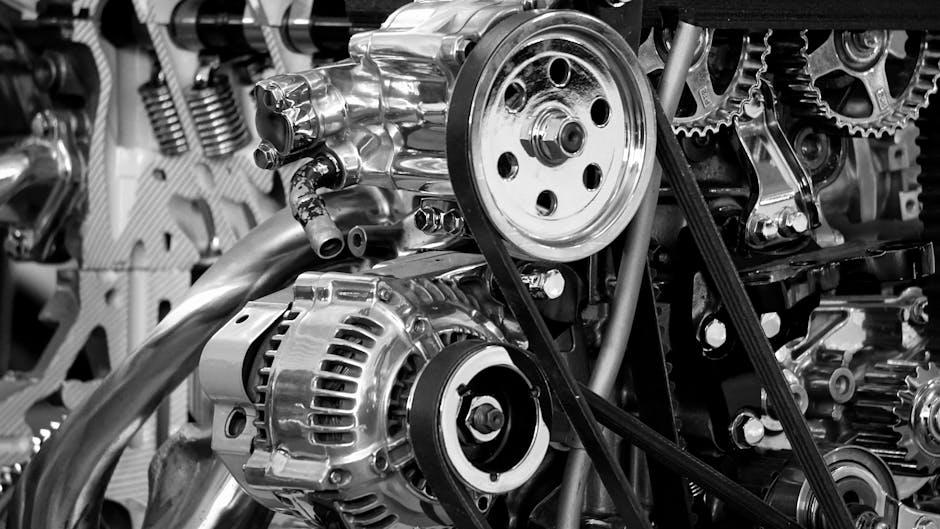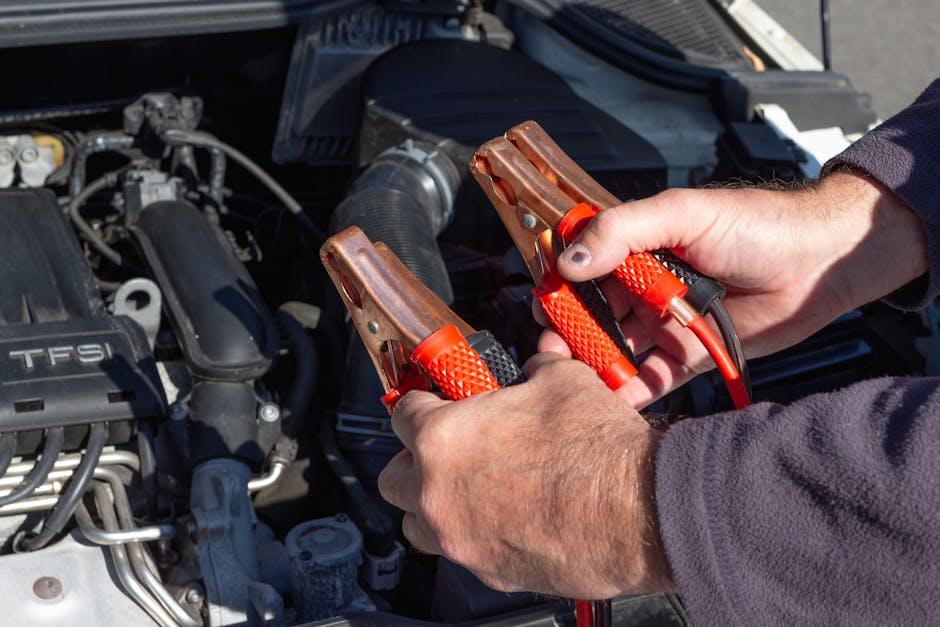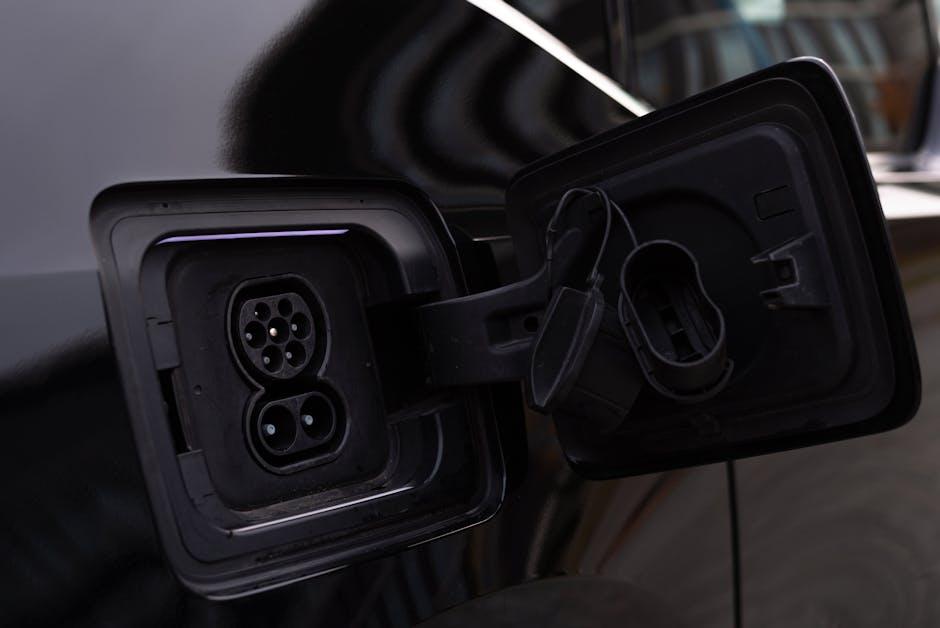In today’s world, where cars are as much about circuits as they are about combustion, electrical issues can be a particularly elusive challenge for drivers and mechanics alike. A flickering dashboard light, a stubborn radio that won’t turn on, or intermittent starting problems might seem minor but often signal deeper electrical faults lurking beneath the vehicle’s sleek exterior. Understanding how to diagnose car electrical issues is not just about technical know-how—it’s about decoding the subtle language of wires, fuses, and signals that keep a modern car running smoothly. This article will guide you through the essentials of pinpointing electrical problems, turning confusion into clarity and frustration into confidence. Whether you’re a seasoned mechanic or a DIY enthusiast, mastering these diagnostic skills is the first step toward getting your car’s electrical system—and your journey—back on track.
Table of Contents
- Understanding the Basics of Your Car’s Electrical System
- Common Symptoms Signaling Electrical Troubles
- Essential Tools for Accurate Diagnosis
- Step-by-Step Guide to Testing Electrical Components
- Interpreting Diagnostic Trouble Codes Effectively
- Preventative Maintenance Tips to Avoid Electrical Failures
- Q&A
- Concluding Remarks

Understanding the Basics of Your Car’s Electrical System
At the heart of every modern vehicle lies an intricate web of wiring, sensors, and components designed to keep your car running smoothly. This system is powered primarily by the battery and alternator, which together ensure that electrical energy flows continuously. Understanding this framework helps you pinpoint where potential issues might originate, from a simple blown fuse to a faulty ignition switch. Key elements include the battery, alternator, starter motor, and various fuses and relays, each playing a vital role in powering everything from your headlights to complex onboard computers.
Before diving into advanced diagnostics, it’s essential to familiarize yourself with basic electrical concepts relevant to your car:
- Voltage: The force that pushes electrical current through circuits.
- Current (Amperage): The flow rate of electricity, important for understanding component power needs.
- Resistance: The opposition to electrical flow, often the cause of voltage drops.
| Component | Function | Common Issues |
|---|---|---|
| Battery | Stores and supplies electrical power | Corrosion, low charge |
| Alternator | Charges battery and powers electrical systems during engine operation | Worn brushes, broken belt |
| Starter Motor | Cranks engine to start | Faulty solenoid, worn gears |

Common Symptoms Signaling Electrical Troubles
When your car starts sending subtle warning signals, it’s crucial to catch them early before they escalate into major headaches. Flickering dashboard lights, inconsistent power windows, or dimmed interior lighting often hint at underlying electrical problems. You might also notice the stereo cutting in and out, or your engine having trouble starting despite a seemingly healthy battery. These signs may seem minor, but they are the car’s way of telling you that its electrical system needs a thorough check.
Keep an eye out for these telltale indications:
- Intermittent lighting issues: Headlights or brake lights that flicker or fail.
- Unusual noises: Clicking sounds when starting, or buzzing from the dashboard panel.
- Excessive battery drain: The battery frequently dies or requires jump-starting.
- Accessory malfunctions: Problems with power locks, windows, or infotainment system.
| Symptom | Possible Cause | Recommended Check |
|---|---|---|
| Dim headlights | Weak alternator | Test charging system output |
| Dashboard lights flickering | Loose wiring or poor ground | Inspect wiring harness and grounding points |
| Engine reluctant to start | Faulty ignition switch | Check ignition circuit continuity |

Essential Tools for Accurate Diagnosis
Accurate diagnosis of car electrical problems hinges on having the right set of tools at your disposal. A multimeter is indispensable for measuring voltage, current, and resistance, helping you pinpoint failures in circuits with precision. Equally important is a test light, which offers a simple way to check for the presence of voltage in wires and connectors without the complexity of configuring equipment. For more intricate systems, a scan tool capable of reading onboard diagnostics (OBD-II) data allows you to retrieve fault codes and monitor sensor outputs in real time, providing a clear insight into electronic control unit (ECU) issues. Alongside these, reliable wire strippers and crimping tools ensure proper handling of electrical connections during repairs.
- Multimeter – versatile measurements for voltage, current, resistance
- Test light – quick voltage presence checks
- OBD-II scan tool – fault code reading and sensor monitoring
- Wire strippers & crimpers – for clean wiring repairs
- Electrical contact cleaner – maintaining connector integrity
| Tool | Primary Use | Key Benefit |
|---|---|---|
| Multimeter | Measure voltage, current, resistance | Pinpoints faulty components |
| Test Light | Detect voltage presence | Simple and quick testing |
| OBD-II Scan Tool | Read engine codes, sensor data | Access to ECU diagnostics |
| Wire Strippers | Strip insulation cleanly | Prepares wires for secure connections |
Beyond hardware, embracing proper safety equipment such as insulated gloves and eye protection is crucial when tackling electrical diagnostics. Investing time to familiarize yourself with each tool’s functionality goes a long way toward avoiding misdiagnosis and unnecessary parts replacement. For instance, learning how to interpret readings from a multimeter can quickly differentiate between a dead wire and a blown fuse. Combining these essential tools with systematic troubleshooting techniques creates a foundation for effective diagnosis and long-lasting repairs of your vehicle’s electrical system.

Step-by-Step Guide to Testing Electrical Components
Begin by ensuring your workspace is safe and well-lit. Before diving into testing, disconnect the battery to avoid short circuits or accidental shocks. Gather tools such as a multimeter, test light, and wiring diagram specific to your vehicle. When checking components like fuses or switches, visually inspect for obvious damage such as burn marks or corrosion. It’s crucial to test while components are both energized and de-energized to pinpoint intermittent issues.
Follow these practical steps to methodically assess each part:
- Continuity Test: Use a multimeter to verify if the circuit completes properly, indicating a functional wire or connection.
- Voltage Measurement: Measure voltage at component terminals to ensure power delivery matches specifications.
- Resistance Check: Evaluate sensors and coils by measuring resistance against manufacturer values.
- Operational Test: Activate the component, observing behavior for signs of failure such as stuttering or total inactivity.
| Component | Typical Reading | Action if Faulty |
|---|---|---|
| Fuse | Continuity Present | Replace Fuse |
| Battery | 12.6V (Idle) | Charge or Replace |
| Ignition Coil | Primary Resistance: 0.4 – 2Ω | Swap Coil |

Interpreting Diagnostic Trouble Codes Effectively
Understanding the codes generated by your vehicle’s onboard diagnostic system is paramount in pinpointing electrical problems accurately. These Diagnostic Trouble Codes (DTCs) provide concise clues about where the fault lies, but interpreting them correctly demands more than a simple code lookup. Always consider the context in which a code appears—are there accompanying symptoms, like dashboard warnings or erratic component behavior? Using a quality OBD-II scanner that delivers detailed descriptions rather than mere alphanumeric codes adds an essential layer of clarity to your diagnostic process.
When faced with a DTC, keep these strategies in mind:
- Cross-check Symptoms: Verify if the reported code aligns with visible issues or irregularities you’ve observed.
- Research Manufacturer Specifics: Some codes vary by make and model, so always consult the vehicle’s service manual for precise interpretations.
- Reset and Retest: Clear codes after repairs and observe if they reoccur to distinguish between genuine faults and transient glitches.
| Code Type | Common Cause | Diagnostic Tip |
|---|---|---|
| P0xxx | Powertrain Issues | Check sensors & wiring first |
| Bxxxxx | Body & Accessories | Inspect electrical modules |
| Uxxxxx | Network Communication | Verify CAN bus connections |

Preventative Maintenance Tips to Avoid Electrical Failures
Consistent attention to your vehicle’s electrical system can save you from unexpected breakdowns and costly repairs. Start by inspecting battery terminals regularly for corrosion, which can disrupt power flow. Use a mixture of baking soda and water to clean terminals and apply dielectric grease afterward to prevent future buildup. Additionally, periodically check the integrity of wiring harnesses and connectors. Look for worn insulation, exposed wires, or loose connections, which are common culprits behind flickering lights and intermittent failures.
Implement a simple routine that includes testing alternator output and battery voltage using a multimeter to ensure optimal charging performance. Remember to keep fuses and relays clean and intact, as damaged components here often masquerade as deeper electrical faults. Below is a quick reference chart for voltage ranges to guide your maintenance checks:
| Component | Normal Voltage Range | Common Issue if Outside Range |
|---|---|---|
| Battery at Rest | 12.4 – 12.7 Volts | Weak battery or failing cells |
| Charging in Operation | 13.7 – 14.7 Volts | Alternator undercharging or overcharging |
| Starter Signal | 9 – 10 Volts | Voltage drop due to corroded cables |
- Inspect and clean battery terminals monthly.
- Check wiring insulation for damage during routine service.
- Use a multimeter to verify battery and alternator health quarterly.
- Replace any faulty fuses promptly to avoid cascading failures.
Q&A
Q&A: How to Diagnose Car Electrical Issues
Q1: What are the common signs that my car has an electrical problem?
A1: Flickering dashboard lights, a dead battery, slow or non-functional power windows, malfunctioning headlights, or a car that won’t start despite a charged battery are classic indicators. Strange smells or burning wires can also signal electrical trouble.
Q2: Where should I start when diagnosing an electrical issue?
A2: Begin with the basics: check your battery’s charge and connections. Corroded or loose terminals are frequent culprits. Next, inspect fuses and relays—these small components protect your vehicle’s electrical circuits and are often overlooked.
Q3: How can I test the battery effectively?
A3: Use a multimeter to measure the voltage. A healthy battery should read around 12.6 volts when the car is off. Anything significantly lower might mean the battery is weak or discharged. Testing under load, such as with a starter test, can further reveal the battery’s condition.
Q4: What role do fuses and relays play, and how do I check them?
A4: Fuses protect circuits from overload, while relays control high-current devices safely using low-current signals. If a fuse is blown, it’s visibly damaged or tested with a multimeter for continuity. Relays can be swapped with known good ones to identify faults.
Q5: Can a faulty alternator cause electrical symptoms?
A5: Absolutely. The alternator charges the battery while the engine runs. Symptoms of a failing alternator include dimming lights, frequent battery warnings, and difficulty starting the car after it’s been running. Testing alternator output with a voltmeter can confirm the problem.
Q6: How do wiring issues factor into electrical diagnostics?
A6: Wires can fray, corrode, or disconnect, causing intermittent or complete failures. Inspect visible wiring harnesses for damage and use wiring diagrams to trace circuits when necessary. Specialized tools like circuit testers help isolate shorts or breaks.
Q7: When should I seek professional help?
A7: Complex issues involving the vehicle’s computer, extensive wiring problems, or diagnostic needs beyond basic tests warrant a visit to a professional mechanic or an auto electrician. Attempting intricate repairs without experience can risk further damage.
Q8: Are there any preventative tips to avoid electrical problems?
A8: Regularly clean battery terminals, avoid aftermarket accessories that draw excessive power without proper installation, and have your electrical system inspected during routine maintenance. Staying ahead of small issues keeps your car’s electrical heart beating strong.
This creative yet practical Q&A provides a roadmap for any driver looking to understand and tackle car electrical issues with confidence.
Concluding Remarks
Navigating the maze of car electrical issues can feel daunting, but with a methodical approach and a keen eye for detail, diagnosing the problem becomes a manageable—and even rewarding—task. Whether you’re a seasoned gearhead or a curious driver, understanding the basics of your vehicle’s electrical system empowers you to pinpoint issues before they escalate. Remember, every flicker, beep, or blackout tells a story; learning to listen to these electrical whispers can keep you safely on the road and save you from unexpected breakdowns. So, equip yourself with patience, tools, and knowledge—and turn those hidden electrical mysteries into solved puzzles.


4 Comments
55dedx
55dedx
0jloms
0jloms